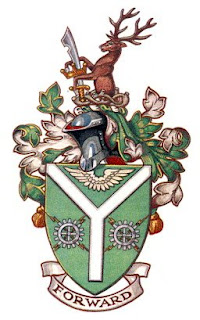INTERNATIONAL BRIGADE
THE FAREWELL
On Saturday October 29 1938 the International Brigaders held their farewell parade in Barcelona, an event deeply etched in the memory of all who were present.
In the presence of many thousands, mainly women and children, Dolores Ibarruri,
"la Pasionaria", one of the most beloved of the leaders of Spanish democracy, spoke for the Spanish people when she said:
"Comrades of the International Brigades!
Political reasons, reasons of state, the welfare of that same cause for which you offered your blood with boundless generosity, are sending you back, some to your own countries and others to forced exile. You can go proudly. You are history. You are legend. You are the heroic example of democracy's solidarity and universality. We shall not forget you, and when the olive tree of peace puts forth its leaves again, mingled with the laurels of the Spanish Republic's victory comeback!"
THE RETURN OF THE INTERNATIONAL BRIGADE
Wednesday 7th December 1938
From News Chronicle, December 8 1938
When it was all over and the station was almost quiet again, the oldest porter to be found was asked if he had ever seen anything like this. "No", he said, "I saw nothing like it even at the end of the last war" Replying to speeches of welcome to the returning Brigaders, Sam Wild, Commander of the British Battalion said:
"We intend to keep the promise we made to the Spanish people before we left — that we would only change our front and continue to fight in Britain for the assistance of Spain "These extracts from "newspapers of the time convey the atmosphere as the Brigaders returned home:

From the Daily Worker, December 8, 1938
At last the train steamed into Victoria Station;, and from its windows there waved the flags of fifty-two nations. Even before it stopped, mothers and sons, wives and husbands were re-united.
As they left the train, headed by Battalion Commander Sam Wild, Political Commissar Bob Cooney and Quartermaster "Hookey" Walker, they were welcomed by Mr Attlee, leader of the Labour Party. With him were Will Lawther of the Miners Federation, Mr William Gallacher, M.P., of the Communist Party, Mr J. R. Squance, Railmen's Union Leader, Sir Norman Angell, Lord Strabolgi, Sir Stafford Cripps and Tom Mann."
From the evening paper Star December 8 1938
Led proudly by their wounded comrades, the men marched into London. With them marched the spirit of Byron, the Tolpuddle Martyrs, the Chartists, Keir Hardie ... Britain's bravest fighters for liberty through the centuries. Behind and around them marched twenty thousand British democrats- Men as well as women wept and cheered alternately; It was no political affair for all parties were represented, both on the platform and in the crowd. It was British democracy spontaneously expressing its abhorrence of Fascism and its appreciation of bravery.
These men have made history, by forming part of the greatest international democratic army the world has ever known. They have inspired the world by their example.
Something of this seemed to enter into everyone who was at Victoria last night, and the memory of it will never be eradicated"







 .
.









